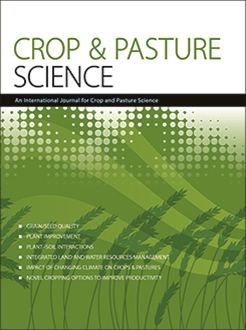Gypsum (CaSO4.2H2O) decreases the harmful effect of soil acidity on plants and provides calcium (Ca) and sulfur (S) for plant nutrition. Setaria grass (Setaria anceps Stapf) and black oat (Avena strigosa Schreb.) are forage grasses that are tolerant of low soil fertility and may be suitable as inter-row crops for Satsuma mandarin (Citrus unshiu Marc.) grown organically on Oxisol soils, which may suffer low native fertility and high acidity. We evaluated the effect of gypsum application to a low fertility soil from subtropical Brazil on soil chemical fertility, growth and plant nutrition of Satsuma mandarin, and plant biomass yield and soil nutrient extraction of setaria grass and black oat cultivated between the orchard rows, in the absence of soluble industrial (NPK) fertilisers. The entire experimental field was limed, and ground natural phosphate rock was applied. During planting of the Satsuma mandarin, organic manure and ground natural phosphate rock were mixed with soil and placed in each planting hole. Two agricultural gypsum treatments were applied: one without gypsum (control), and the other with gypsum at 6 t ha−1. After 12 months, gypsum reduced the level of aluminium (Al3+) and increased Ca2+ at soil depth 0–40 cm, and increased S-SO42− at soil depth 0–60 cm. Other soil chemical components (pH, phosphorus, potassium, magnesium and micronutrients) were not affected by gypsum application. Gypsum did not affect growth of Satsuma mandarin, but increased leaf S concentration. Between the rows, gypsum decreased nitrogen extraction by setaria grass and increased Ca and S extractions by black oat. Biomass yield and nutrient extraction by the studied forage grasses were satisfactory, considering the poor soil fertility conditions. Setaria grass exhibited higher efficiency in recycling nutrients from the chemically poor soils than black oat. In general, setaria grass and black oat can be used as inter-row forage grasses for organic orchards of Satsuma mandarin, where there are restrictions on use of soluble industrial fertilisers.
How to translate text using browser tools
2 November 2021
Effects of gypsum on growth and nutrient status of forage grasses cultivated between the rows of organically grown Satsuma mandarin in an Oxisol from subtropical Brazil
Maciel Korzune,
Fabrício William Ávila,
Renato Vasconcelos Botelho,
Marcelo Marques Lopes Muller,
Poliana Horst Petranski,
Eduardo Luiz Costa Tobias Pinto,
Talia Aksenen,
Sidnei Osmar Jadoski,
Leandro Rampim
ACCESS THE FULL ARTICLE

Crop and Pasture Science
Vol. 72 • No. 11
November 2021
Vol. 72 • No. 11
November 2021
Acidic soil
Avena strigosa
Citrus unshiu
organic agriculture
organic orchard, plant nutrition
Setaria anceps
soil fertility





